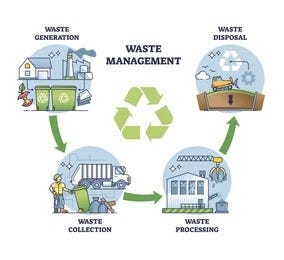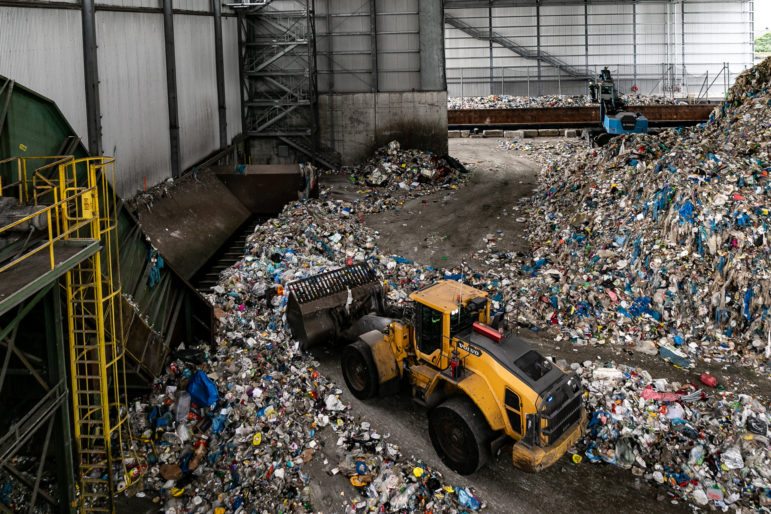The Duty of Recycling Lives Services in Supporting Local Areas
The Duty of Recycling Lives Services in Supporting Local Areas
Blog Article
Exploring Various Kinds of Waste in Modern Waste Management Solution
The modern landscape of waste administration involves browsing a complex variety of waste types, each calling for specialized handling and disposal approaches to reduce ecological impacts. Local solid waste, contaminated materials, digital waste, and natural waste each existing distinct obstacles and possibilities for resource healing. Innovative services such as wise waste containers and waste-to-energy technologies are becoming critical devices in enhancing performance and sustainability. Recognizing these waste types is necessary for cultivating public awareness and encouraging active engagement in lasting practices. What techniques can properly resolve these varied kinds of waste while promoting a round economic climate?
Metropolitan Solid Waste
Metropolitan solid waste, often referred to as household garbage or waste, includes a range of discarded materials generated by residential, commercial, and institutional resources within a town. This waste stream generally consists of products such as product packaging, food scraps, backyard trimmings, paper, plastics, textiles, and thrown out household products. The administration of community solid waste is a crucial component of city preparation and public wellness, necessitating efficient collection, transportation, and disposal systems.
Efficient waste management systems are developed to minimize ecological influence while maximizing resource recuperation. This often entails a combination of strategies consisting of landfilling, composting, and recycling. Reusing programs target products like paper, glass, steels, and particular plastics, diverting them from garbage dumps and reintroducing them into the production cycle. Composting natural waste, such as food scraps and backyard trimmings, not only decreases land fill usage yet additionally generates important dirt amendments.
Communities need to additionally attend to the logistical and economic challenges connected with waste monitoring. Executing pay-as-you-throw systems, improving public recognition, and buying innovation can dramatically enhance waste diversion rates. By integrating these practices, districts can foster lasting areas, minimize greenhouse gas discharges, and save natural deposits.
Hazardous Waste

Efficient harmful waste management includes numerous essential actions: identification, disposal, treatment, and segregation. Partition makes sure that hazardous materials are stored independently from non-hazardous waste to prevent cross-contamination.
Regulative structures, such as the Source Conservation and Healing Act (RCRA) in the USA, give standards and standards for contaminated materials administration. Adherence to these guidelines, coupled with innovations in waste therapy innovations, is important in minimizing the threats connected with dangerous waste.
Digital Waste
Electronic waste, typically referred to as e-waste, stands for a quickly growing challenge in waste monitoring systems worldwide. This sort of waste incorporates thrown out electronic devices and devices such as mobile phones, computers, televisions, and other digital appliances. The rapid rate of technical advancement, coupled with lowering product lifespans and customer demand for the most up to date devices, has tremendously enhanced the quantity of e-waste created each year.
E-waste is particularly problematic because of its complicated composition, usually containing dangerous substances like mercury, cadmium, and lead, which position substantial ecological and health threats if not correctly managed. Conversely, e-waste additionally has beneficial materials such as copper, gold, and silver, which can be recovered and recycled. The double nature of e-waste-- both important and hazardous-- requires specific handling, recycling, and disposal procedures.
Efficient e-waste monitoring involves rigorous governing structures, robust collection systems, and advanced recycling innovations. Public awareness and involvement More about the author are vital, as improper disposal methods, such as unlawful disposing and casual recycling, aggravate ecological contamination and wellness risks. Enhancing e-waste monitoring methods is essential for alleviating ecological impact and recouping useful sources in a progressively electronic world.

Organic Waste
Organic waste, making up kitchen scraps, backyard trimmings, and farming deposits, stands for a considerable portion of the international waste stream. This sort of waste is naturally degradable, suggesting it can be damaged down by microbes into simpler organic substances. In spite of its possibility for all-natural decay, inappropriate administration of organic waste can lead to negative environmental influences, including the discharge of greenhouse gases such as methane, which add to climate modification.
Effective administration of organic waste is vital for reducing these environmental effects (recycling lives services). Composting is a commonly adopted method, transforming organic waste right into nutrient-rich compost that can improve soil health and agricultural productivity. Additionally, anaerobic food digestion is an emerging modern technology that transforms organic waste right into biogas, a renewable resource resource, and digestate, which can be made use of as fertilizer
Municipalities and waste monitoring entities have to apply robust natural waste collection and therapy programs to make the most of the benefits of these processes. Public education and learning projects can also play an essential duty in encouraging homes and companies to separate natural waste from other kinds of waste. By focusing on the management of organic waste, societies can lower garbage dump use, lower greenhouse gas discharges, and create valuable byproducts for agricultural check these guys out usage.

Ingenious Waste Monitoring
In the realm of waste management, cutting-edge techniques are changing just how cultures manage their refuse, aiming for sustainability and performance. One prominent technology is the application of clever waste bins furnished with sensors that check fill degrees and enhance collection paths.
One more noteworthy development is the adoption of waste-to-energy (WtE) modern technologies. By transforming non-recyclable waste into useful energy via procedures such as incineration and anaerobic digestion, WtE lowers garbage dump worry and supplies a renewable resource source. Improvements in chemical reusing enable for the break down of intricate plastics into their initial monomers, making it possible for the development of brand-new, premium plastic items.
Furthermore, the round economy design is gaining traction, stressing the design of items and systems that prioritize reusability and resource effectiveness. This all natural method motivates sectors to minimize waste generation from the beginning. Via these innovative methods, modern-day waste management systems are not only dealing with the instant obstacles of waste disposal however likewise leading the means for a more sustainable future.
Final Thought
A thorough understanding of municipal solid waste, unsafe waste, digital waste, and organic waste, coupled with the application of ingenious waste management options, is vital for minimizing ecological impacts. Integrating technologies such as wise waste bins and waste-to-energy systems can improve effectiveness and sustainability. Efficient waste monitoring approaches not only foster resource recovery but also promote public understanding and involvement, inevitably adding to the growth of a round economic climate.
The modern landscape of waste monitoring entails browsing a complex array of waste kinds, each requiring specialized handling and disposal methods to mitigate ecological influences. Metropolitan solid waste, harmful waste, electronic waste, and organic waste each existing distinctive obstacles and possibilities for resource recuperation.Digital waste, frequently referred to as e-waste, represents a rapidly growing challenge in waste monitoring systems internationally. Through these ingenious approaches, modern-day waste administration systems are not only addressing the prompt difficulties of waste disposal however also leading the means for an extra sustainable future.
A comprehensive understanding of metropolitan strong waste, dangerous waste, electronic waste, check my blog and natural waste, paired with the application of cutting-edge waste administration solutions, is important for alleviating environmental influences. (recycling lives services)
Report this page